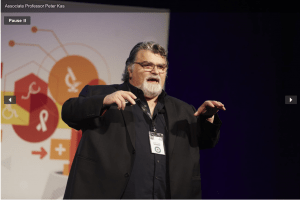I remember years ago when we used to manage cardiac arrests and everyone was asked to stop compressions while someone felt for a pulse. Do you remember that? “I think I feel one. I wonder if that’s mine? Can someone else feel please?” Meanwhile time with no CPR passed.
Today with the push for cardiocerebral resuscitation and the importance of continuous CPR, foremost in our minds, we do everything we can to avoid delays in CPR.
When we do feel for a pulse in that few seconds of break in CPR, whilst breaths are being given, how good are we at getting it right? Are we wasting our time? Are we making mistakes that can cause mortality?
The FEEL Study(1) in 2010, a prospective trial, where 204 patients underwent a ‘FEEL’ ultrasound examination during ongoing cardiac arrest (100) and in a shock state (104). The results are surprising:
- 35% of those with an ECG diagnosis of asystole, and
- 58% of those with PEA,
had coordinated cardiac motion detected on ultrasound, and was associated with an increased rate of survival. This is huge!
The REASON Trial in 2016, a non-randomised prospective trial run at 20 hospitals, looked at cardiac ultrasound performance in cardiac arrest.
793 patients were enrolled in this study. 54% of patients diagnosed with PEA had cardiac activity on initial bedside cardiac echo.
The results are very similar.
I would expect it to be even more difficult in children. In a 2009 paper in Resuscitation (3), where all cardiovascular information was obscured, doctors and nurses were asked to assess if there was a pulse or not in 16 infants. The results were not good. External cardiac compressions were withheld on 14% of occasions when they were needed and in 36% of cases were given when they were not needed.
The moral to the tale is in PEA especially we need to use the bedside echo to determine if there is any cardiac wall motion. Cardiac wall motion is what we are looking for, not valve motion which can occur when giving intravenous fluids and ventilating the patient. More on this next time and at our Echocardiogram workshops.
References
- Raoul Breitkreutz, et al. Focused echocardiographic evaluation in life support and peri-resuscitation of emergency patients: A prospective trial. November 2010Volume 81, Issue 11, Pages 1527–1533
- Gaspari R et al. Emergency Department, Point of Care Ultrasound in Out of Hospital and in ED Cardiac Arrest. Resuscitation 2016;September 28.
- Tibballs J1, Russell P. Reliability of pulse palpation by healthcare personnel to diagnose paediatric cardiac arrest. Resuscitation. 2009 Jan;80(1):61-4.

Associate Professor Peter Kas




